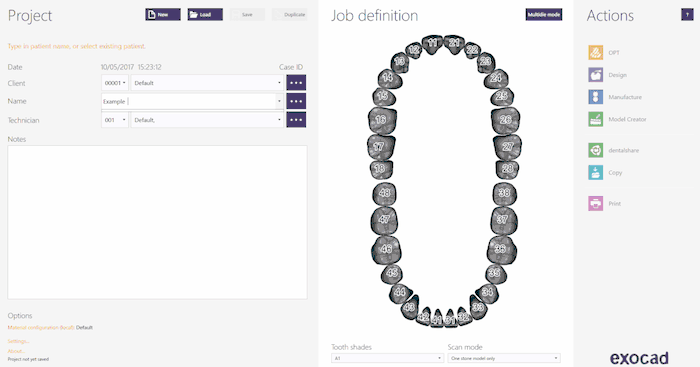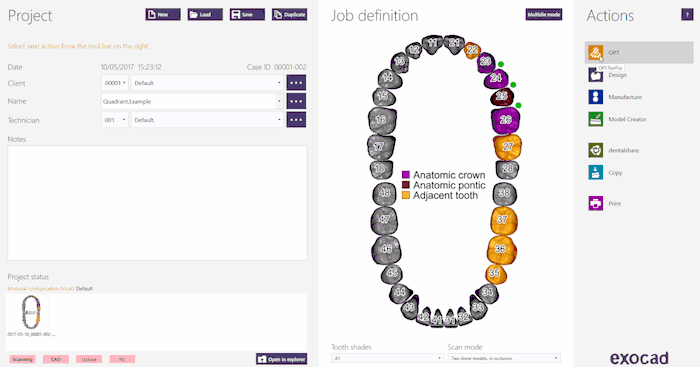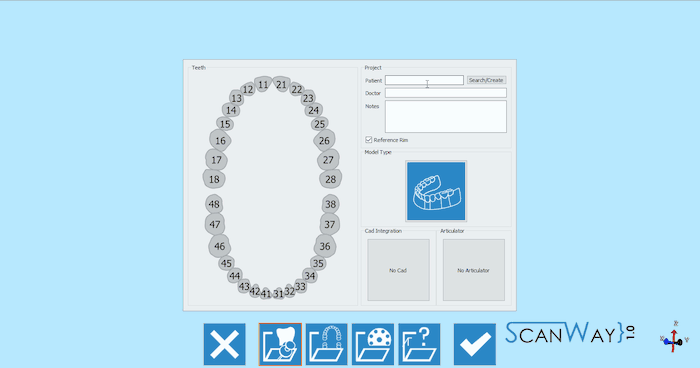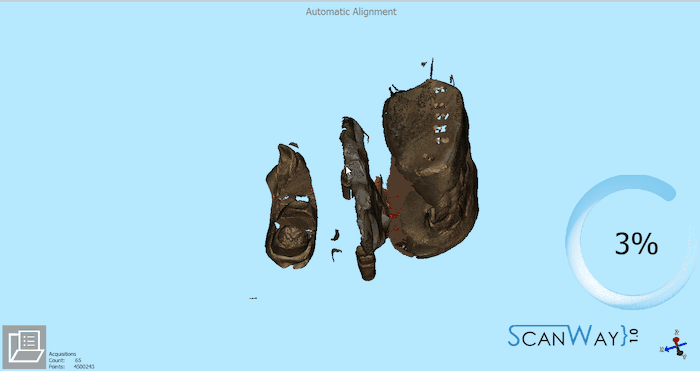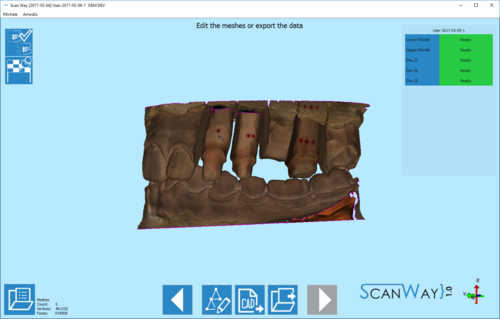Example: Quadrant Module
In this page will be followed and explained the wizard for scanning 2 quadrant models in occlusion with 3 dies using the Open Technologies Quadrant Module.
This module allows scanning quadrant models, with up to 4 stumps, in a 2-steps defined project cutting in half the scanning time.
THIS IS AN ADDITIONAL OPEN TECHNOLOGIES LICENSE MODULE: ASK YOUR DEALER HOW TO GET IT!!
Contents
Project definition starting from Exocad
To create this project in Exocad, click on the DentalDB icon on your desktop. The project manager will open.
Fill in the project information, the kind of restoration that needs to be designed and the extra parameters. For this kind of project make sure that the Scan Mode is set on Two stone models in occlusion, the type of model will be specified later in the scanning software to trigger the correct wizard.
For further information on how to create projects in Exocad, visit the specific page on the Exocad Wiki!
Here is the project definition for our demo project:
Once the project has been defined just click OPT in the Actions section to launch the scanning software.
The first thing the scanning software shows is the project created in Exocad.
In order to activate the correct wizard, click on the Model Type icon and select the ![]() option.
option.
Click the Accept button ![]() to save the changes and start the project.
to save the changes and start the project.
Project definition starting from ScanWay
All projects can be defined in the scanning software as well, regardless the CAD that will be later on used to design.
Launch the scanning software double-clicking on the ScanWay icon on your desktop. The Welcome Page will open; to create the project click on the first icon.
For detailed information on how to define a project visit the specific page: Create a New Project.
Here is the definition of our demo project:
Select here if you wish to work with a sectioned or unsectioned quadrant model.
Both the project definitions described lead to the same wizard, which will be now followed step by step.
Step 1: Articulator Scanning
In this case, for articulator, is meant the quadrant tray occlusor, which can be scanned directly on the normal model holder.
The user can decide freely how to place the occlusor on the model holder.
Once the objects have been placed in the scanner (either the articulator or the models one on top of the other), the scan can be started with the Scan Button![]() . Once the scan is finished the result will be shown.
. Once the scan is finished the result will be shown.
For further information on the other available functions check the Scan Interface page.
Click ![]() to access the second step of the wizard.
to access the second step of the wizard.
Step 2: Quadrant Scan
This step develops in the usual phases.
Scan
For this step, all the elements need to be positioned as marked by the software in the Quadrant holder.
Click the Scan Button![]() to start the scan. Once the scan is finished the result will be shown.
to start the scan. Once the scan is finished the result will be shown.
Click ![]() to access the edit step.
to access the edit step.
Edit
In this case, the image has been trimmed using the base cut tool and clicking on the apply button.
BE CAREFUL NOT TO TRIM TOO MUCH, AS TO DO SO THE SOFTWARE MIGHT HAVE ISSUES DURING THE AUTOMATIC ALIGNMENT
Click ![]() to access the alignment phase.
to access the alignment phase.
Alignment
As for all scanned items, the software tries to align all the images to their reference. In this case, the reference for all the scanned items is the articulator scan.
At the end of the alignment, the results are shown. To learn more about the automatic alignment and the manual procedure visit our Alignment Interface page.
Click ![]() to access the last step of the wizard.
to access the last step of the wizard.
Step 3: Mesh Generation and Export
At this point, the software immediately starts mesh generation. The meshes can be edited and exported individually or as a unique image. To learn more about mesh editing visit our Mesh Tools page.
Click on the Export Button ![]() to export to CAD.
to export to CAD.
If the project has been started from Exocad, the CAD will automatically open and the design can be started immediately. Otherwise, the software will ask the user how to export the file.
